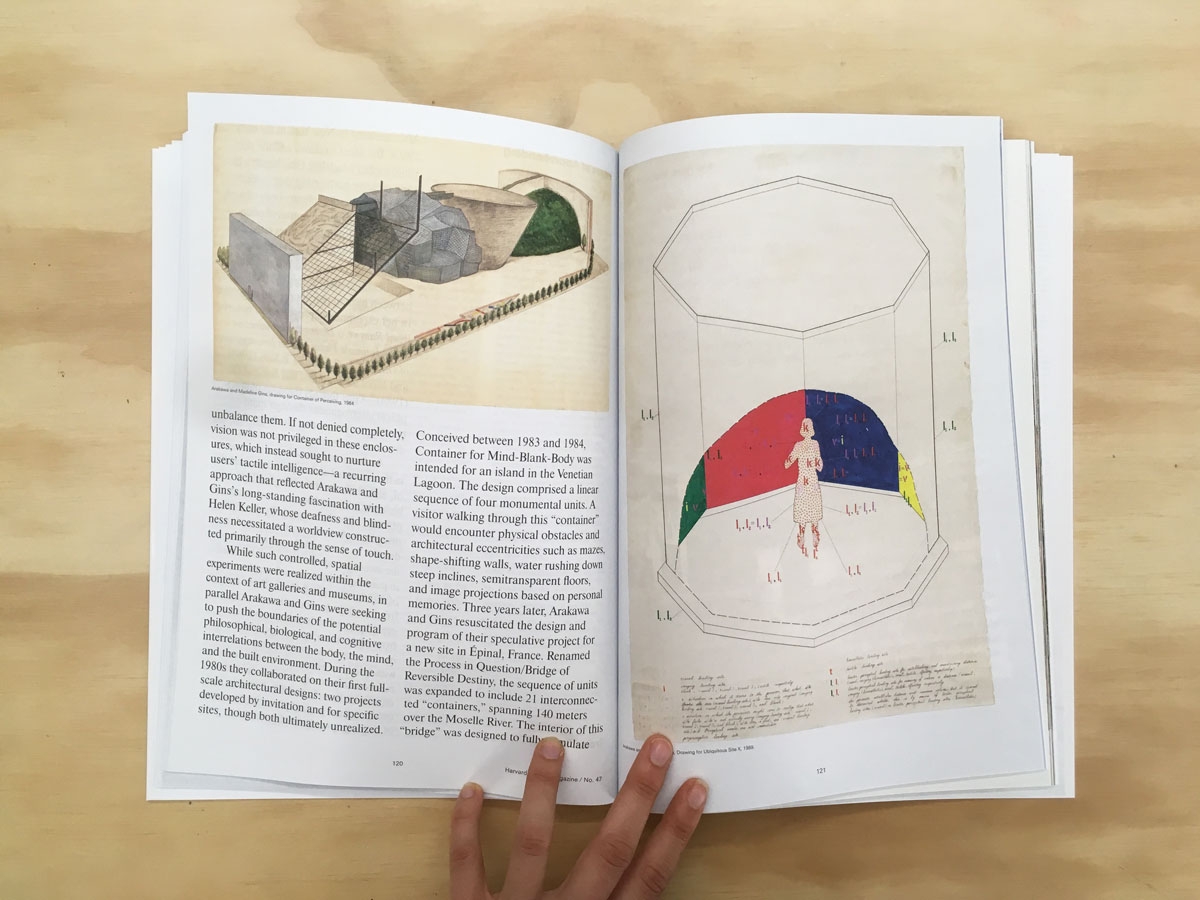
In 1937, Walter Gropius joined the GSD faculty as chair of the Department of Architecture and brought modern designers, including Marcel Breuer to help revamp the curriculum. These and other problems demand a deep and systems-level understanding of the underlying problem architecture, which in turn enables innovative, multi-faceted solutions that transcend disciplines and scales. The Doctor of Design (D.Des.) program at the Harvard Graduate School of Design is a leading doctoral degree program for professionals who wish to conduct rigorous, intensive design research. The program is geared towards applied research that advances design related knowledge in a broad range of scales from product design to buildings and landscapes to urban design and regional planning. Accredited by the Planning Accreditation Board and open to students with an undergraduate degree, the two-year professional Master in Urban Planning (M.U.P.) degree program engages with critical issues facing cities and regions in coming decades.
Allston I-90 Project ‘On a Roll’ After Federal Grant, Though Final Design Remains Contentious
The DDes program is highly regarded internationally, and DDes alumni have become thought leaders in their respective fields. Their work promotes and advances improvements of the built and the natural environment worldwide. They hold prestigious positions in private practice, industry, government and academia. The design disciplines are critical to engaging the most urgent and complex conditions of our time, and the Master in Design Studies program at the GSD prepares students to rise to the challenge, with training that is at once foundational, multitudinous, and incisive. While priority will be given to students with a design background, MDes is broadly welcoming of students from a wide range of educational backgrounds and life experiences, and deliberate in mobilizing the full intellectual capacity of the GSD in support of MDes students’ ambitions. With more than 50 issues in print, Harvard Design Magazine probes beyond the reaches of the established design disciplines to enrich and challenge current discourse.
College of Visual and Performing Arts - George Mason University
At a public meeting Wednesday night in Cambridge, state officials presented proposals for the parkland and shoreline that will open up following the realignment, including filling in the riverbank to varying degrees or constructing a boardwalk or sea wall, and different ways of managing stormwater runoff. This issue examines multihyphenation as a mode of creative practice, a political response, and an economic imperative in our 21st century neoliberal world. Our world’s increasingly complex problems demand a deep understanding of underlying problem architecture, the capacity to imagine bold futures, and the ability to build and test prototypes geared toward maximum impact. The Master in Design Engineering (MDE) program prepares a new generation of leaders to create transformative solutions that address societal grand challenges.
Master in Design Engineering
Together with partner Sharon Johnston, Mark served as Co-Artistic Director for the 2017 Chicago Architecture Biennial. Paul Andersen is founder of Independent Architecture, a Denver-based office with projects around the United States. He was appointed a Fulbright Specialist in Architecture, teaches at the University of Illinois at Chicago, and has previously been on the architecture faculties of the Universidad Torcuato Di Tella, the Harvard Graduate School of Design, and Cornell University.
Master of Architecture II
The Harvard Graduate School of Design (GSD) is the graduate school of design at Harvard University, a private research university in Cambridge, Massachusetts. It offers master's and doctoral programs in architecture, landscape architecture, urban planning, urban design, real estate,[1] design engineering, and design studies. Research topics are proposed during admission and are decided upon entry into the program. Student research should align with current faculty research interests, allowing for affiliations with faculty and, possibly, the research labs.
We also encourage you to explore the GSD through student work and the pages below to learn more about our degree programs, application requirements, student life, and financial aid. The Master in Design Studies (MDes) post professional program at Harvard’s Graduate School of Design is aimed at those who want to pair their design knowledge with tools to enable careers in public service, academia, NGOs, innovative ventures, as well as developing specific expertise for design practice. The Ecologies Domain investigates relationships among changing environments, varied forms and traditions of human settlement, and the material, infrastructural, and ecological networks required to sustain life.
As of 2016, the program's ten-year average ranking places it first, overall, on DesignIntelligence's ranking of programs accredited by the National Architectural Accrediting Board. Distinct from research in the sciences or humanities, design pedagogy involves highly interactive ways of thinking and learning that directly engage the technical, material, spatial, ecological, political, economic, and planetary dimensions of cultural life. Ultimately, MDes at the GSD challenges conventional ways of learning, and achieves a scope and diversity that are unmatched by any other design school in the world. The Harvard Graduate School of Design does not discriminate against applicants or students on the basis of race, color, national origin, ancestry or any other protected classification. The Graduate School of Design educates leaders in design, research, and scholarship to make a resilient, just, and beautiful world.
The course of study is rigorous and comprehensive, preparing graduates for the full range of professional activities in the field of architecture. The GSD campus is located northeast of Harvard Yard and across the street from Memorial Hall. Gund Hall is the main building of the GSD, and it houses most of the student space and faculty offices.
Architect Jeanne Gang on soaring Gilder Center design - Harvard Gazette
Architect Jeanne Gang on soaring Gilder Center design.
Posted: Fri, 15 Sep 2023 07:00:00 GMT [source]
Current Issue
Applicants are expected to clearly articulate their research topics in the application by submitting a concise and well-structured research proposal. Thesis topics investigate more specific issues within individual or combined research areas, and do not necessarily correspond to individual academic disciplines. Instead, they are often interdisciplinary in nature, involving faculty and resources from other graduate schools at Harvard and contribute to expanding the intellectual range of design research. The GSD offers a dynamic setting for the exchange of ideas across the fields of architecture, landscape architecture, urban planning, urban design, real estate, design studies, and design engineering—united in the pursuit of a more just, coherent, and beautiful world. Our world faces increasingly complex, often unpredictable dilemmas of consequence to human lives and living environments, including rapid urbanization, climate change, and resource scarcity. The MDE program prepares innovators who operate both creatively and analytically, think strategically, and collaborate broadly.

Explore 25 years of design thinking and scholarship, buy our current issue, or order from our extensive back issue catalog below. HUPAD advances Harvard’s mission of teaching and research in the service of humanity by sustaining and enhancing its built environment. HUPAD supports stewardship of one of the world’s most iconic academic settings and strives for excellence in campus planning and design. She was a Professor of Landscape Theory and Technology Theory in the Torcuato Di Tella University graduate programs and has taught theory courses at other universities such as Universidad del Litoral and The Boston Architectural College. The MDE program combines GSD methods of analysis, visualization, conceptual inquiry, and open-ended exploration with the rigor and quantitative power of the engineering disciplines at SEAS to address problems far beyond traditional design and engineering fields.

Drawing on the strengths of the department, school, and university, GSD planning students learn how to understand, analyze, and influence the variety of forces—social, economic, cultural, legal, political, ecological, and aesthetic, among others—shaping the built environment. The issue features curator Antwaun Sargent in conversation with artists Rick Lowe and Amanda Williams, as well as interviews by the guest editors with fashion designer Casey Cadwallader of Mugler, artist Farah Al Qasimi, and Felix Burrichter, founder and creative director of PIN–UP magazine. An essay by artist Irena Haiduk on the Third Way and Yugoslav fashion designer Aleksandar Joksimović is accompanied by never before published drawings by the designer. Architect Andrew Witt and artist collective Metahaven consider the future of artificial intelligence in design in a pair of essays. The issue concludes with a series of dispatches from curators and editors from around the world, including Edward Enninful, Hans Ulrich Obrist, Sumayya Vally, Carson Chan, Tosin Oshinowo, Jan Boelen, Nora Razian, Aric Chen, Shirley Surya, Fredi Fischli, and Niels Olsen.
The Master in Design Engineering is a collaborative degree program between the Harvard University Graduate School of Design and the Harvard John A. Paulson School of Engineering and Applied Sciences. Please explore further information about the program’s four domains, MDes degree requirements, and related courses and faculty. And please join us for our Open House events to learn more about each of the domains and possible trajectories through them. “It’s supposed to be multimodal, and it seems very car centric,” she said in an interview. She added that the source of the federal funding, the federal Reconnecting Communities and Neighborhoods Grant Program, was intended for projects “to undo the wrongs” of highway construction, which broke up many urban neighborhoods in the mid-1900s.
The America Issue of Harvard Design Magazine, featuring a new design and art direction by Alexis Mark, invites historians, architects, landscape architects, urban designers, theorists, curators, artists, and planners to reflect on the country’s past and present, and to imagine sustainable futures. Projects, taxonomies, dialogues, essays, and spatial interpretations explore possible Americas. They allow us to delve into issues relevant to small cities, towns, and rural areas—as well as major urban centers—and to study barriers and opportunities facing communities across the country. As a post-professional studio-based program, the Master of Architecture in Urban Design (M.A.U.D.) combines intense design instruction, extensive applied research, and knowledge of urban history and theory.
Other nearby buildings include space for the school's Design Research Labs, faculty offices, the Loeb Fellowship program office, and research space for students, including those in the MDes and DDes programs. The Doctor of Design (DDes) program at the Harvard Graduate School of Design is a leading doctoral degree program for highly creative and motivated professionals who wish to conduct rigorous, intensive design research. The Master in Design Engineering (MDE) program prepares the next generation of leaders to create transformative solutions that positively improve society. The integrated fields of design and engineering are uniquely positioned to address the world’s toughest challenges. Design necessarily engages the most urgent and complex conditions of our time, and the Master in Design Studies (MDes) post professional program empowers students to address those conditions head on. We’ve made hundreds of sample articles, interviews, and other content from current and previous issues of the magazine available for you to peruse at your leisure.
This work designs the optical system of SHOT to obtain a large FOV of up to 1.5 deg and match the detector with the size of 60 mm × 60 mm and pixel pitch of 0.8 mm. By adding a corrector lens to the optical system and optimization, the aberrations mainly caused by the optical elements in the detector system are reduced. The influence of each component assigned to different terahertz materials is analyzed. Like many other participants, Jennifer Pieszak, a member of Community Rowing, saw room for improvement in the project. Cole D. Rainey-Slavick, a Somerville resident, said the state’s lack of interest in cutting lanes clashed with their climate goals and professed commitments to reducing car-dependency across Massachusetts. As it stands now, the realignment would bring 12 lanes of traffic across the turnpike and Soldiers Field Road down to ground level.
Mark Lee is the Chair of the Department of Architecture at the Harvard Graduate School of Design and a principal and founding partner of the Los Angeles-based architecture firm Johnston Marklee. Since its establishment in 1998, Johnston Marklee has been recognized internationally with over 50 major honors and awards. A book on the work of the firm entitled House Is a House Is a House Is a House Is a House was published by Birkhauser in 2016, and monographs include 2G N.









